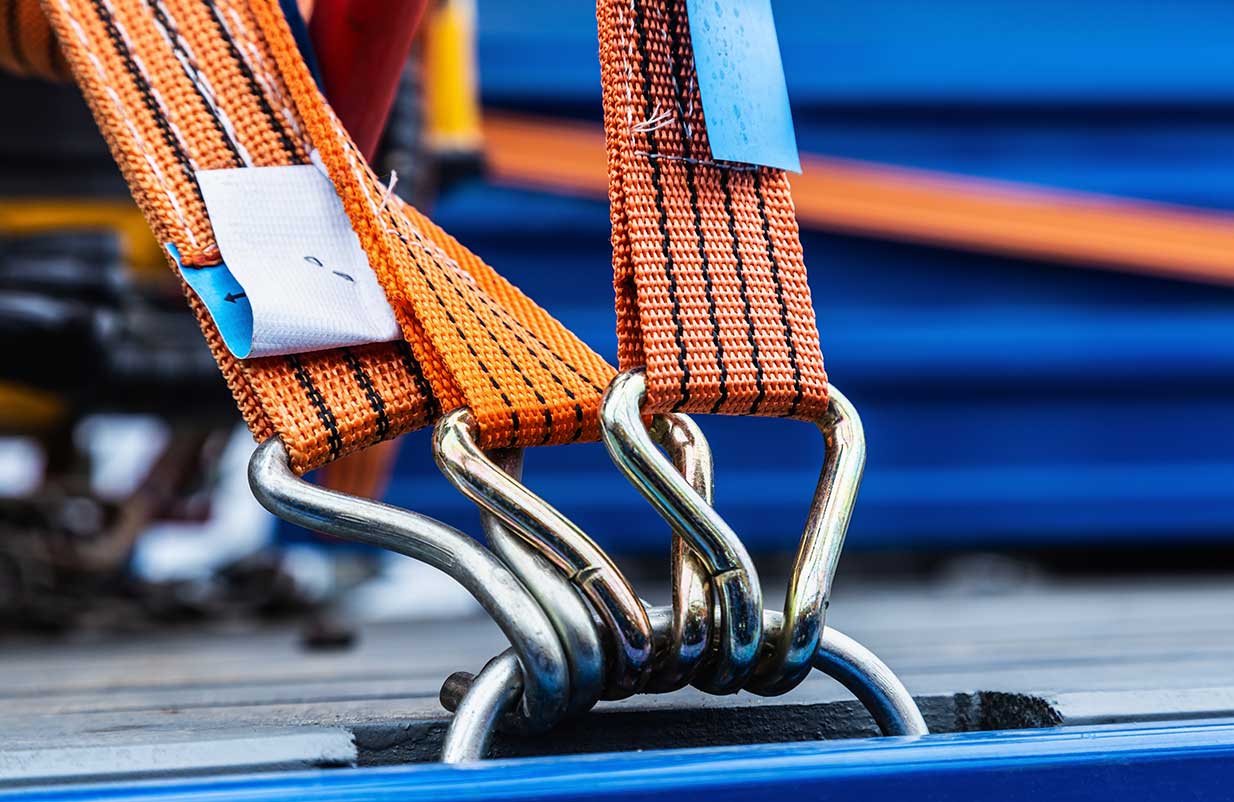
calendar_month July 10, 2024
Ensuring Maritime Safety and Efficiency: The Critical Role of Lashing in Shipping
In the maritime shipping industry, "Lashing" is an indispensable practice that involves securing cargo on vessels using various methods and materials. The primary objective of lashing is to ensure that cargo remains stable and intact throughout its journey, safeguarding the vessel, crew, and cargo from the potential hazards posed by shifting loads. This article delves into the intricacies of lashing, its paramount importance, various methods, best practices, and the challenges faced in its implementation, providing a comprehensive understanding of this critical aspect of maritime operations.
The Significance of Lashing 1. Safety Assurance:The foremost importance of lashing lies in its role in ensuring safety aboard the vessel. Unsecured cargo poses significant risks, including potential injuries to crew members and structural damage to the ship. Effective lashing mitigates these risks, thereby enhancing overall maritime safety.
2. Preservation of Cargo Integrity:Properly secured cargo is less likely to sustain damage during transit. This is crucial for maintaining the value and condition of goods, especially for fragile, valuable, or perishable items. Ensuring cargo integrity protects the interests of shippers and consignees alike.
3. Regulatory Compliance:Adherence to international maritime regulations, such as those stipulated by the International Maritime Organization (IMO), necessitates proper cargo securing practices. Compliance with these regulations is not only a legal requirement but also a demonstration of commitment to safety and professional standards.
4. Economic Efficiency:Preventing cargo damage and loss translates to significant financial savings. Additionally, efficient lashing practices can optimize space utilization on vessels, enabling maximum cargo capacity and thereby enhancing economic efficiency.
Diverse Lashing Methods 1. Ropes and Cords:Traditional lashing techniques utilize ropes and cords made from materials like nylon and polyester. These flexible materials can be adjusted to secure various types of cargo effectively, offering a versatile solution for many shipping needs.
2. Chains and Tensioners:For securing heavier and bulkier cargo, heavy-duty chains and tensioners are employed. Chains provide robust strength and stability, making them ideal for securing large machinery and equipment.
3. Straps and Ratchets:Ratchet straps, typically made from durable materials such as polyester, are widely used due to their ease of use and adjustability. The ratchet mechanism allows for precise tightening, ensuring a secure hold on the cargo.
4. Twist Locks and Stackers:In container shipping, twist locks are essential for securing containers to the ships deck and to each other. Stackers further stabilize containers, preventing lateral and vertical movements, and ensuring the integrity of the cargo stack.
Best Practices in Lashing 1. Comprehensive Pre-Planning:Effective lashing begins with thorough planning, which involves assessing the type and size of the cargo, understanding the voyage route, and anticipating sea conditions. This allows for the selection of the most suitable lashing materials and techniques.
2. Regular Inspections:Continuous monitoring and inspection of lashing equipment are vital to identify wear and tear. Prompt replacement of damaged or weakened lashing gear is necessary to maintain the integrity of the securing system and ensure safety.
3. Crew Training:Ensuring that crew members are well-trained in lashing techniques and safety protocols is critical. Adequate training equips personnel with the knowledge required to implement effective lashing practices and respond to potential issues promptly.
4. Use of Anti-Slip Mats:Employing anti-slip mats beneath cargo can prevent sliding and enhance stability. These mats increase friction between the cargo and the ships deck, providing an additional layer of security.
5. Detailed Documentation:Maintaining comprehensive records of lashing procedures, materials used, and inspection reports is essential for accountability and regulatory compliance. Documentation also aids in continuous improvement of lashing practices.
Challenges in Lashing 1. Adverse Weather Conditions:Rough seas and high winds pose significant challenges to lashing systems. Ships must be equipped and prepared to handle sudden weather changes that could affect cargo stability.
2. Diverse Cargo Types:The wide variety of cargo types, ranging from containers to bulk goods, requires different lashing techniques and materials. This diversity necessitates a flexible and adaptive approach to cargo securing.
3. Time Constraints:The pressure of tight loading and unloading schedules demands that lashing operations be both efficient and thorough. Balancing speed with meticulousness is crucial to ensure safety without compromising operational efficiency.
ConclusionLashing is a critical component of maritime shipping, playing an essential role in ensuring the safe and secure transport of cargo across the globe. By adhering to best practices and continuously improving lashing techniques, the shipping industry can minimize risks, protect valuable cargo, and maintain operational efficiency. As global trade continues to expand, the importance of proper lashing cannot be overstated, highlighting the need for ongoing commitment to safety, training, and regulatory compliance in cargo securing practices.